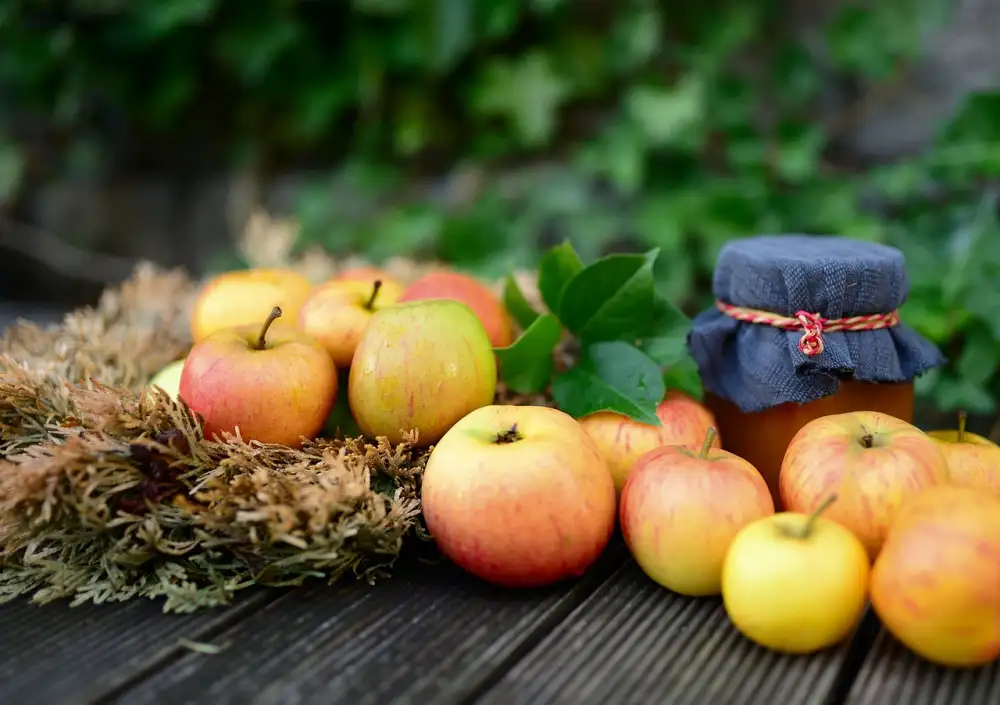Preserve the Freshness: A Step-by-Step Guide on How to Preserve Basil

Preserving basil is a great way to extend the shelf life of this fragrant herb and enjoy its fresh flavor all year round. Whether you have an abundance of basil from your garden or want to make sure you always have some on hand, learning how to preserve it is a valuable skill for any home cook. There are several methods for preserving basil, including freezing, making infused oil, creating paste, and drying. Each method has its own unique benefits and can be used in various culinary applications. In this guide, we will take you through the step-by-step process of preserving basil so that you can savor its freshness even when it's out of season.
Selecting fresh basil leaves
Selecting fresh basil leaves is crucial for preserving their flavor and aroma. Look for basil bunches with vibrant green leaves that are not wilted or discolored. The leaves should be firm and free from any signs of browning or yellowing. Avoid basil with black spots or mold, as these indicate spoilage. Opt for organic basil whenever possible to ensure it is free from pesticides and other chemicals. Remember, the fresher the basil, the better the preserved result will be.
Washing and drying basil leaves
Washing and drying basil leaves is an essential step in preserving their freshness. Start by gently rinsing the leaves under cool running water to remove any dirt or debris. Be careful not to bruise or damage the delicate leaves. After washing, pat them dry with a clean kitchen towel or use a salad spinner to remove excess moisture. It's important to ensure that the leaves are completely dry before proceeding with the preservation process to prevent mold or spoilage. Properly dried basil leaves will retain their vibrant color and flavor, making them perfect for long-term storage.
Freezing basil leaves
Freezing basil leaves is a great way to preserve their freshness and flavor for an extended period. Here's a step-by-step guide on how to freeze basil leaves:
1. Start by selecting fresh basil leaves that are vibrant green in color and free from any blemishes or discoloration. The best time to harvest basil is in the morning when the leaves are at their peak flavor.
2. Gently wash the basil leaves under cool running water to remove any dirt or debris. Pat them dry using a clean kitchen towel or paper towels.
3. Once dry, remove the stems from the basil leaves as they can become tough and bitter when frozen.
4. Next, you have two options for freezing basil leaves: flash freezing or freezing in oil.
- For flash freezing, spread the individual basil leaves in a single layer on a baking sheet lined with parchment paper. Place the baking sheet in the freezer for about 1-2 hours until the leaves are completely frozen.
- Alternatively, you can blend the washed and dried basil leaves with olive oil to create a smooth paste-like consistency. Transfer this mixture into ice cube trays and freeze until solid.
5. Once frozen, transfer the flash-frozen basil leaves or basil cubes into an airtight container or freezer-safe bag. Make sure to label them with the date of freezing for future reference.
6. Frozen basil can be stored in the freezer for up to 6 months without losing its flavor and aroma.
To use frozen basil, simply remove as much as you need from the container or bag and add it directly to your recipes without thawing. It works well in soups, stews, sauces, marinades, and even pesto!
By following these simple steps, you can enjoy the taste of fresh basil all year round without worrying about it going bad. Freezing is an excellent preservation method that allows you to savor this aromatic herb whenever you desire.
Making basil-infused oil
Making basil-infused oil is a wonderful way to preserve the fresh and vibrant flavors of basil. To make this aromatic oil, start by selecting a bunch of fresh basil leaves. It's important to choose leaves that are free from any blemishes or discoloration.
Next, gently wash the basil leaves under cool running water to remove any dirt or debris. Pat them dry with a clean kitchen towel or paper towels. Make sure they are completely dry before proceeding.
Once the basil leaves are dry, place them in a blender or food processor. Add enough olive oil to cover the leaves completely. The amount of oil you use will depend on how much basil you have, but a good rule of thumb is to use about 1 cup of oil for every 2 cups of packed basil leaves.
Blend the mixture until it forms a smooth and vibrant green paste. You may need to scrape down the sides of the blender or food processor bowl to ensure all the leaves are fully incorporated.
Next, transfer the mixture into a clean glass jar with an airtight lid. Make sure the jar is sterilized beforehand to prevent any bacteria growth. Store it in a cool, dark place for at least two weeks to allow the flavors to infuse into the oil.
After two weeks, strain the oil through a fine-mesh sieve or cheesecloth into another clean jar or bottle. This will remove any solid particles and leave you with a clear and fragrant basil-infused oil.
You can now use this flavorful oil in various dishes like salads, pasta, grilled vegetables, and even drizzle it over pizzas for an extra burst of freshness. Remember to store your homemade basil-infused oil in a cool place away from direct sunlight to maintain its quality and flavor for up to six months.
Preserving basil in this way allows you to enjoy its delightful taste and aroma long after the growing season has ended. So go ahead and make a batch of basil-infused oil to add a touch of summer to your culinary creations all year round.
Creating basil paste
Creating basil paste is another great way to preserve the freshness and flavor of this aromatic herb. To make basil paste, start by selecting fresh basil leaves that are vibrant green in color and free from any blemishes or discoloration.
Next, wash the basil leaves thoroughly under cold running water to remove any dirt or debris. Pat them dry gently using a clean kitchen towel or paper towels.
Once the basil leaves are dry, place them in a food processor or blender along with a small amount of olive oil. The ratio should be approximately one part oil to three parts basil leaves.
Blend the mixture until it forms a smooth paste-like consistency. If needed, you can add more olive oil to achieve the desired texture.
Transfer the basil paste into an airtight container and store it in the refrigerator for up to two weeks. Alternatively, you can freeze the paste in ice cube trays for longer storage.
Basil paste is incredibly versatile and can be used in various dishes such as pasta sauces, soups, marinades, and dressings. It adds a burst of fresh flavor to your culinary creations all year round.
By creating basil paste, you can enjoy the taste of summer even during the colder months when fresh basil may not be readily available. So go ahead and give it a try – your taste buds will thank you!
Storing dried basil leaves
Storing dried basil leaves is crucial to maintain their flavor and aroma. Once the leaves are completely dry, store them in an airtight container. Make sure the container is clean and dry before adding the basil leaves. Store the container in a cool, dark place such as a pantry or cupboard. Avoid exposing the dried basil leaves to heat, light, or moisture as it can cause them to lose their potency. Properly stored dried basil can last for up to one year, allowing you to enjoy its delightful flavor in your dishes throughout the year.
Tips for using preserved basil
1. Add frozen basil leaves directly to soups, stews, and sauces for a burst of fresh flavor.
2. Use basil-infused oil as a dressing for salads or drizzle it over roasted vegetables.
3. Mix basil paste with mayonnaise or yogurt to create a delicious spread for sandwiches or wraps.
4. Sprinkle dried basil leaves over pizzas, pasta dishes, or grilled meats for an aromatic touch.
5. Combine preserved basil with other herbs like oregano and thyme to enhance the overall flavor of your dishes.
6. Experiment by adding preserved basil to homemade marinades, salad dressings, or even cocktails for a unique twist.
7. Remember to adjust the amount of preserved basil according to your taste preferences as its intensity can vary based on the preservation method used.
By following these tips, you can make the most out of your preserved basil and enjoy its delightful flavors all year round!
In conclusion, preserving basil is a simple and effective way to enjoy its fresh flavor all year round. Whether you choose to freeze the leaves, make basil-infused oil or create a basil paste, these methods will help you preserve the vibrant taste and aroma of this versatile herb. Storing dried basil leaves in an airtight container will ensure their long-lasting freshness. Remember to label and date your preserved basil for easy identification. With these preservation techniques, you can add a burst of basil goodness to your dishes even when it's not in season. So go ahead and start preserving the freshness of basil today!
Published: 25. 02. 2024
Category: Recipes



